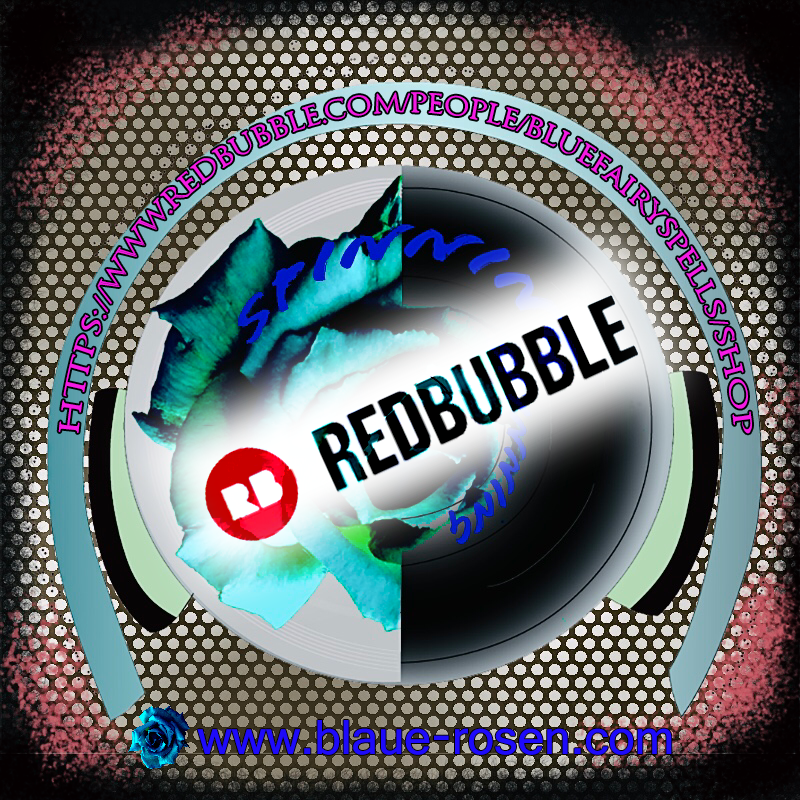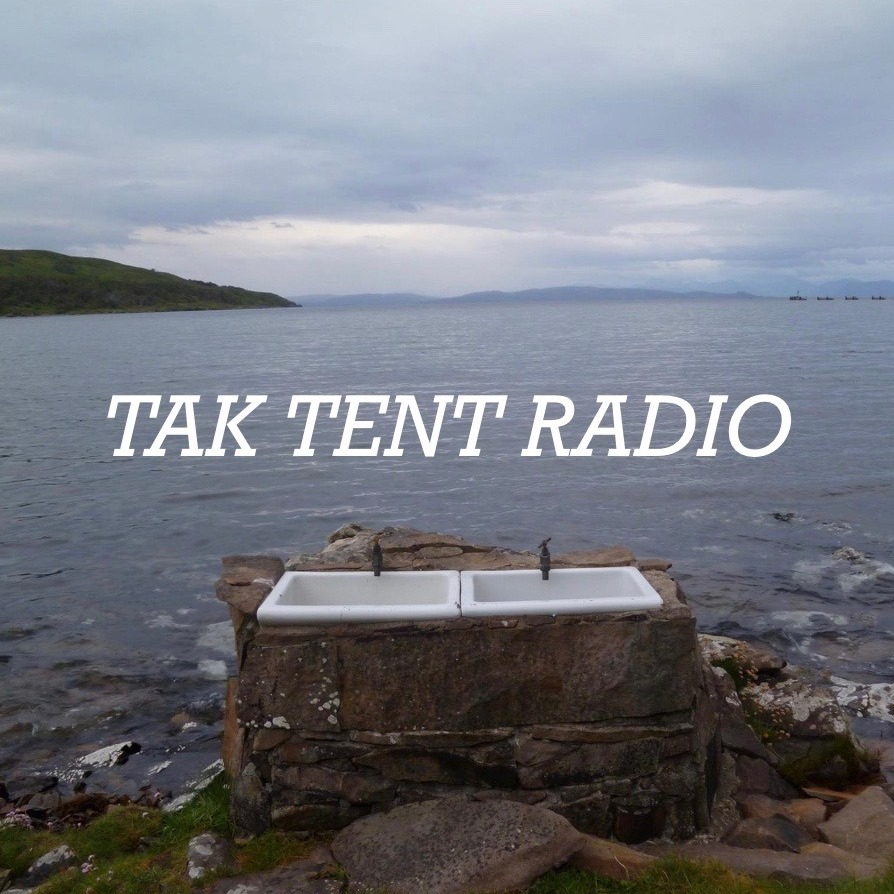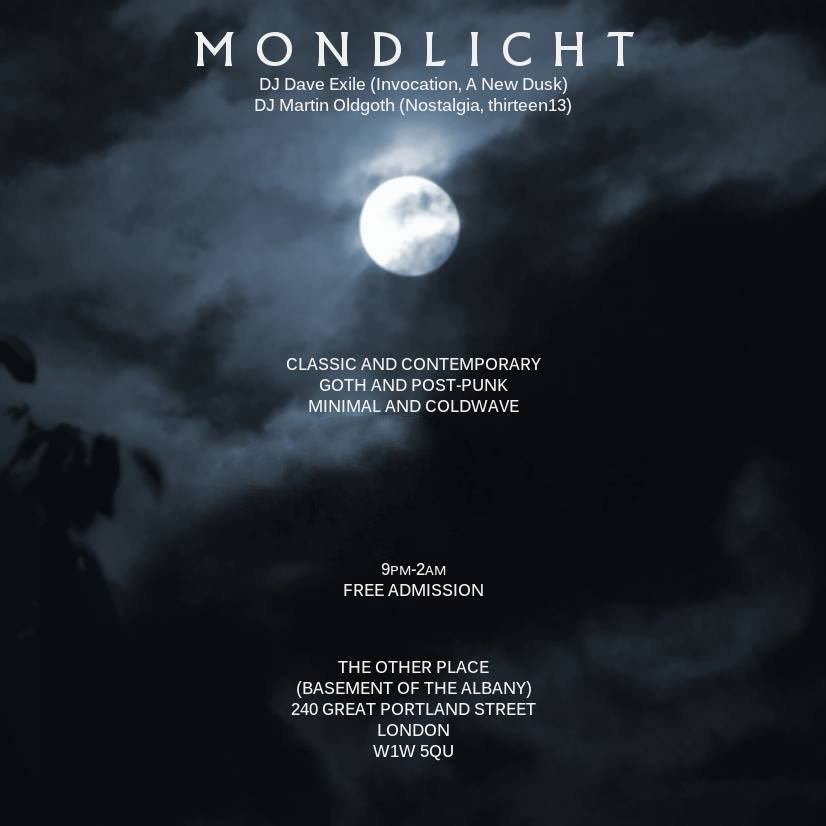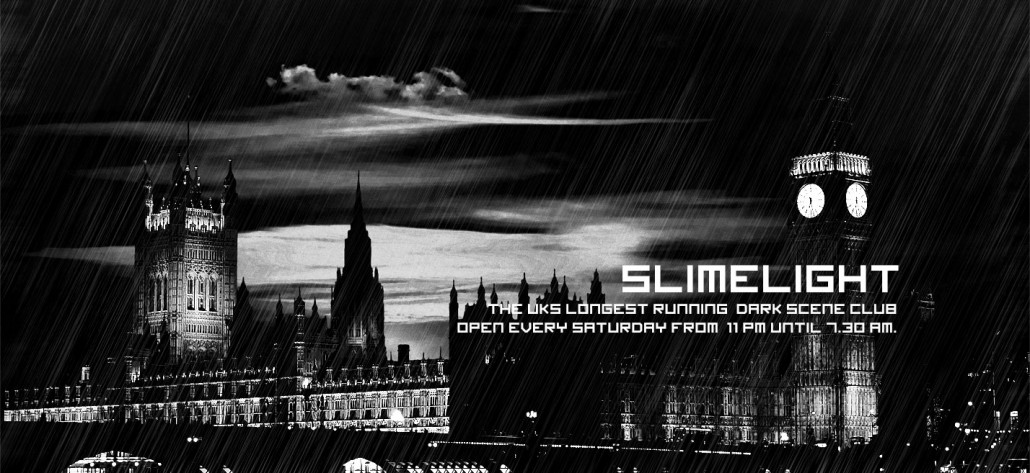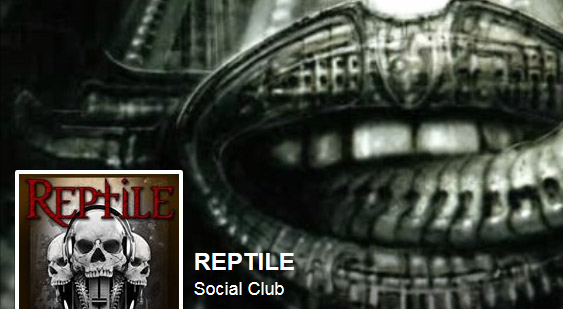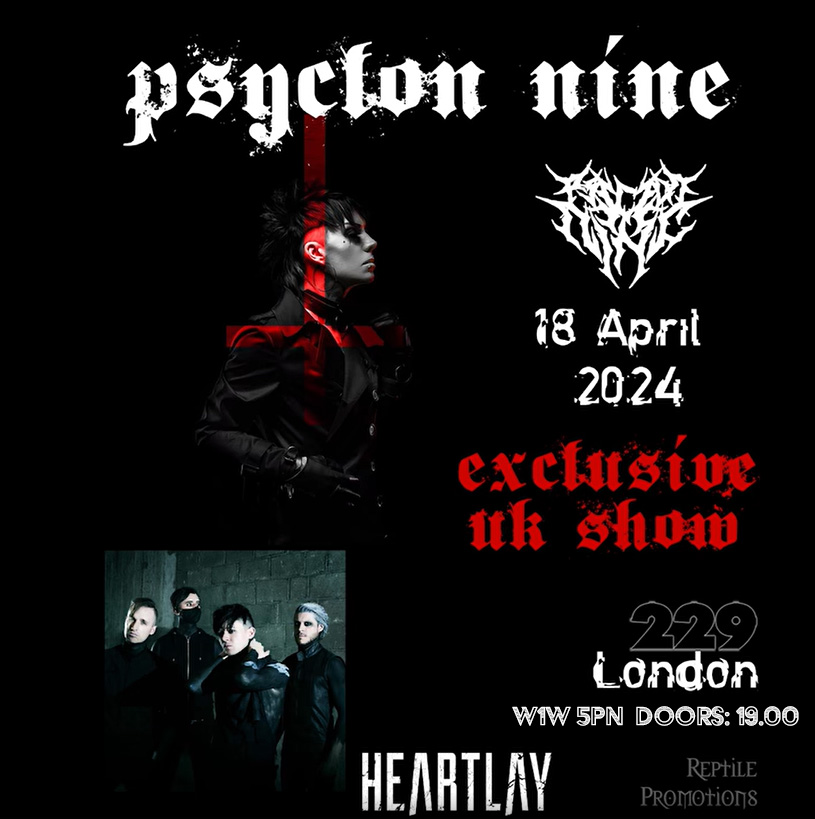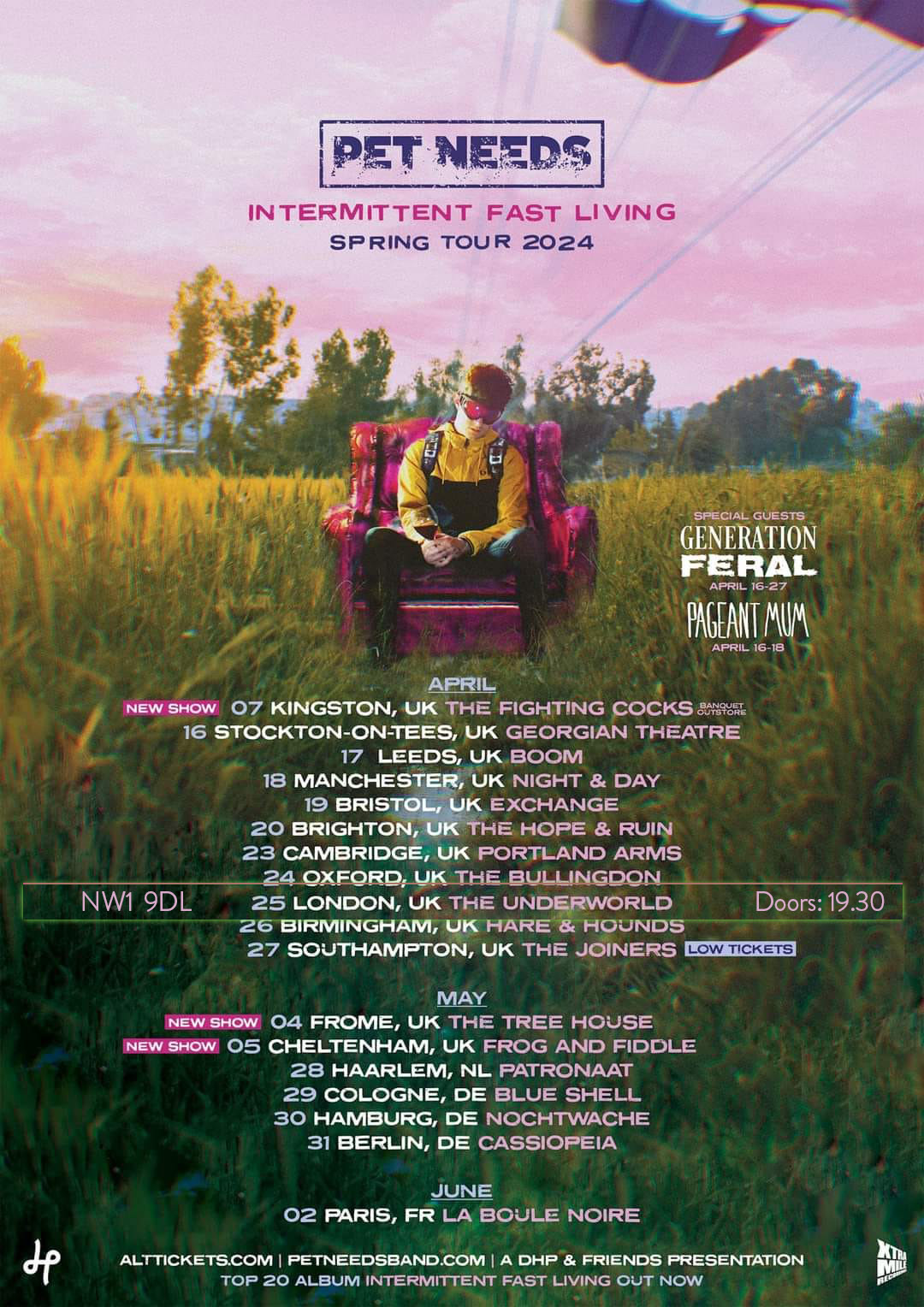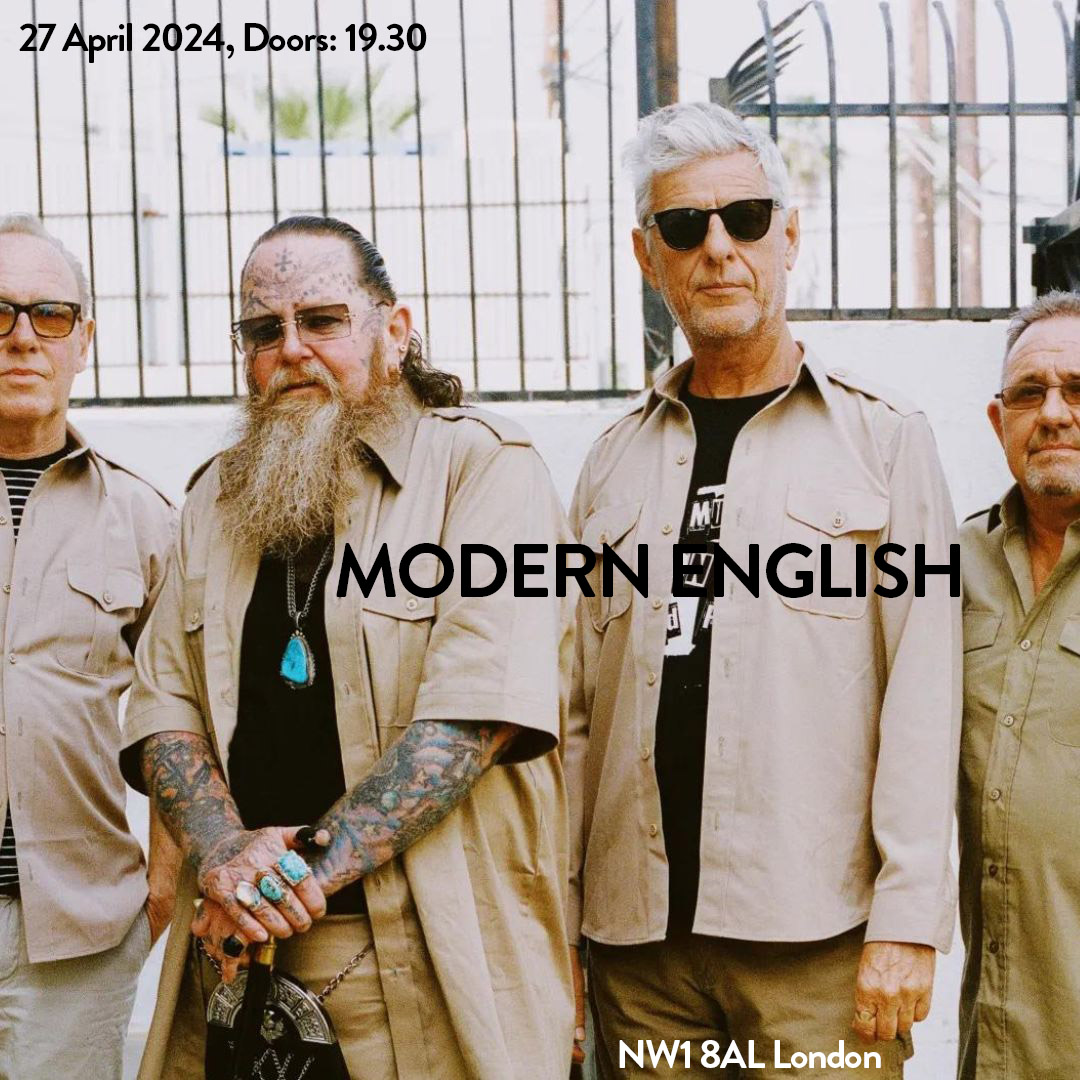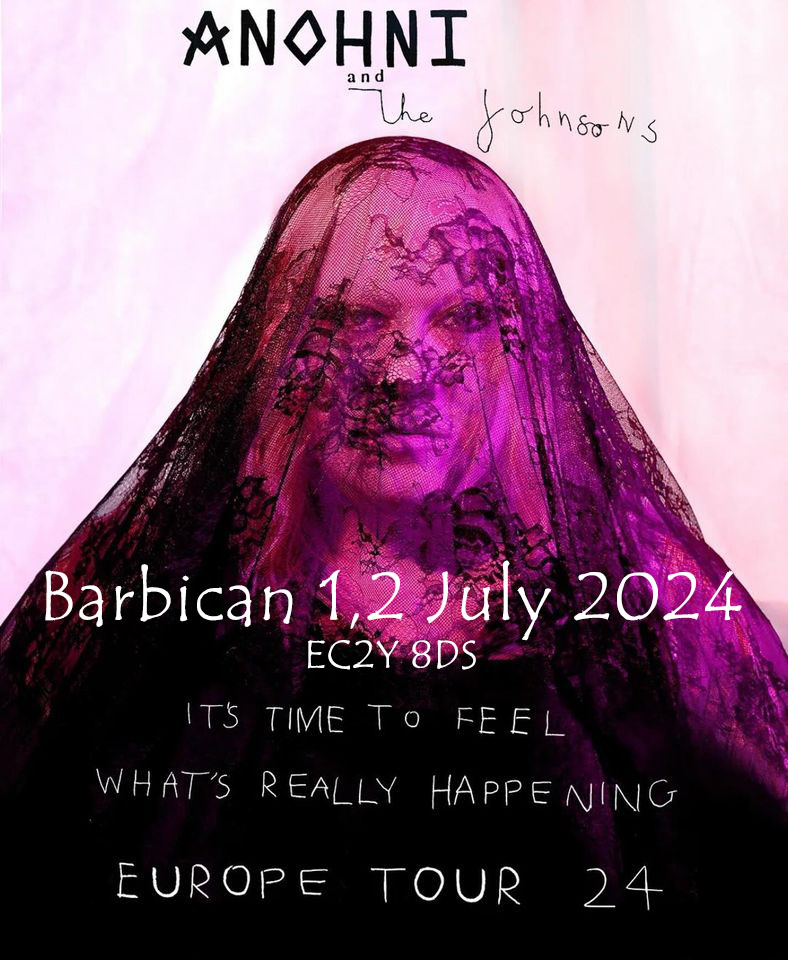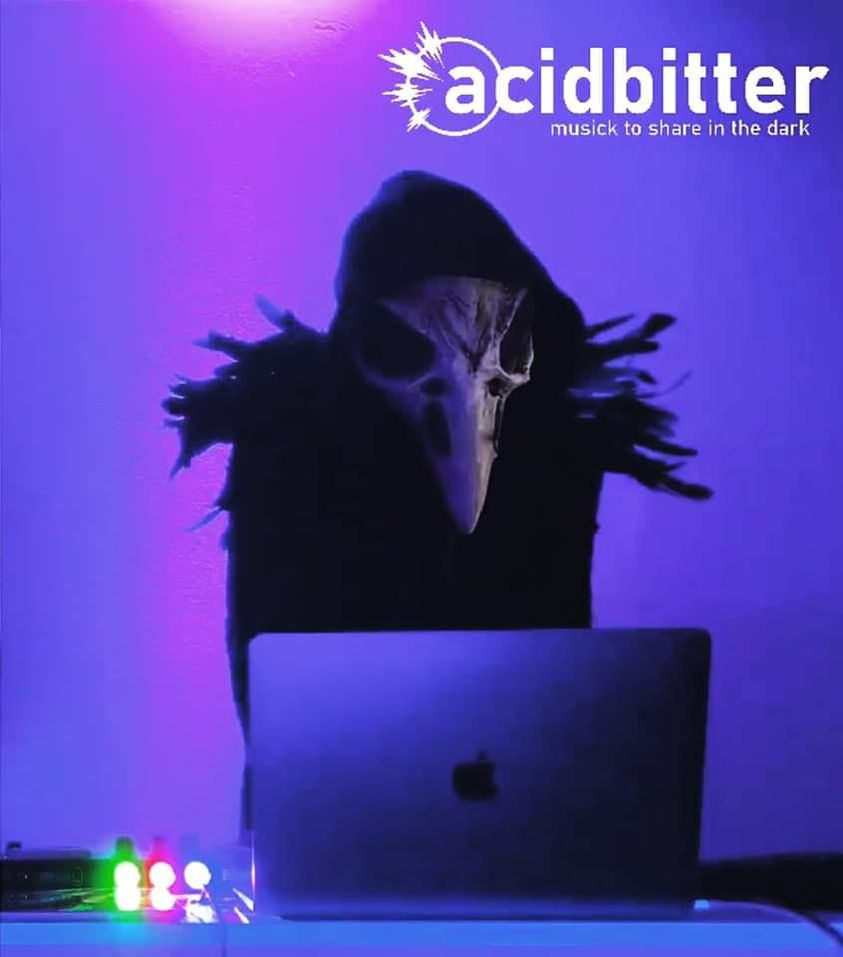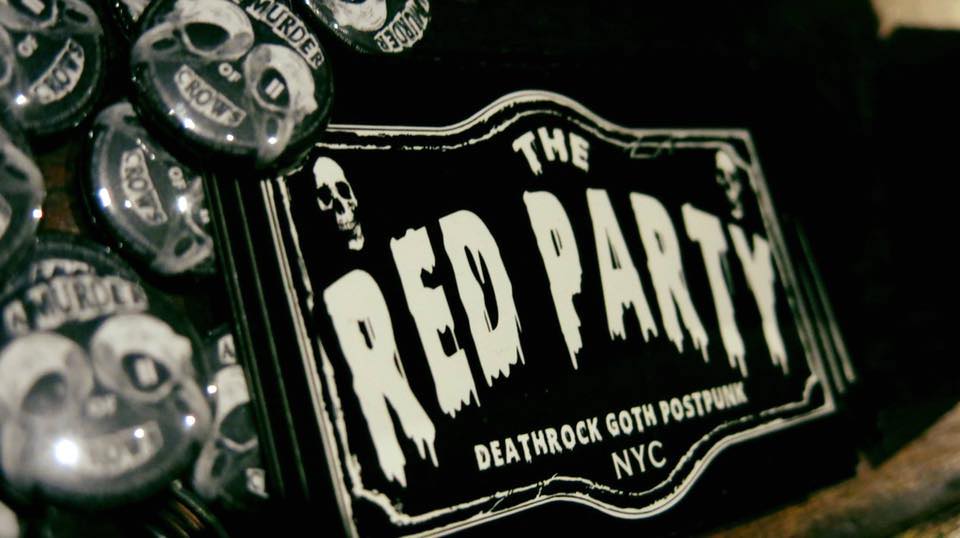Katy and Nick, a.k.a Katy Cotterell and Nick Carlisle have mesmerised us with their debut album made up of psychedelic sonic stories entitled ‘What I Did For You‘; and when we feel that way about an album, we want to learn more about the people behind its sound. While each of them is involved 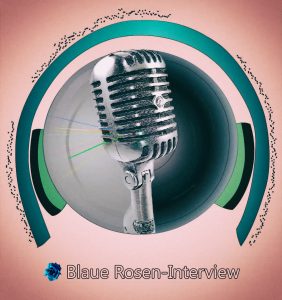 in at least 3 projects, they have joined their creative forces in order to write a mind-altering sonic recipe for us, which comes from a place of misophonia where a fascination with the work of E.A Poe and H.P Lovecraft meet ASMR and This Mortal Coil. We have talked with them about art in the time of a pandemic, about self determination and the sonic stories that inspire them. Have a listen to their album and support it.
in at least 3 projects, they have joined their creative forces in order to write a mind-altering sonic recipe for us, which comes from a place of misophonia where a fascination with the work of E.A Poe and H.P Lovecraft meet ASMR and This Mortal Coil. We have talked with them about art in the time of a pandemic, about self determination and the sonic stories that inspire them. Have a listen to their album and support it.
Blauerosen: Hi Katy&Nick,thank you joining me in this interview. What a fantastic album you have released! Congratulations. Where do we find you at the moment in terms of your artistic explorations?

Nick: I have recorded a few song ideas for the next Katy and Nick album plus I’m continuing to record for other projects too, I might do something on my own at some point but the idea fills me with dread as much as it excites me.
Katy: I have found a global pandemic to be a particularly uncreative time and have been unable and unmotivated to make any music. My other band Es also released our album at the beginning of lockdown, so its been good to feel like that’s been fairly well received despite cancelled tours and plans around that. I have been able to do a bit of painting and collage, but I feel like I work best in collaboration with others and being in the world, in motion. I think I work in waves of over productivity and then what feels like total void, so I’m thinking about ways to find more balance and discipline, but I don’t like to force things.
Blauerosen: Your first album together is entitled ‘What I Did For You’. The title seems quite personal. What can you share with us about it?
Katy: Out of context of the songs, loaded phrases such as the title ‘what I did for you’ and ‘put yourself before the other’ could sound generous, bitter, martyred or cruel. I am interested in the generosity and exchange of performing in public and the potential of group dynamics and collaboration to manifest as ‘other than us’. But yeah the delivery of the phrase ‘what I did for you’ within the music is quite resentful or forceful in tone, is it coming from a place of truly giving? I have been thinking about performance as service and integrating elements of pursuing work in what are sometimes called the ‘helping’ professions and how some people are I think attracted to work where they can feel invisible or an extension of someone else. I don’t know, its very loaded.
Blauerosen: This album is a series of sonic stories that defy music genres and transcend the work you have both created in your other projects. The cover of the album could be a cover of a story book. What has been more fascinating in this new collaboration, the story itself as it is being written or the way it sounds?
Nick: I think we both bring these elements to the table in a fairly clear cut way – Katy the story, and me the sound – or at least the ‘vertical colour’ of sound as opposed to the notes as Katy wrote a lot of the music. The project started after I heard some tracks Katy had made in Garageband, early versions of ‘That Man Is Back‘, ‘Formless Signs & Until Then‘, which I was particularly taken with – then I kind of finished those songs off with a bridge or a middle or ending section. And so I think for me it has been a case of ‘inhabiting Katy’s world‘ in a sense – and so any further music I wrote for the project was very much written with this world in mind, with my own experiences and interpretations feeding in.
Katy: The cover art is interesting because it’s my ‘art’ but I gave it over to Nick in bits and pieces which  he scanned and put together as a digital collage. I spoke to him about what I had in mind and he sort of translated that very well. That also mirrors our process in terms of how the music often seems to develop, like Nick says. I don’t think the sound and the process/unfolding of this project are mutually exclusive things, they feed into each other. I was thinking about gift giving or nurturing something and untying knots, but I try not to overthink things as I tend to over intellectualise feelings and ideas, as I am doing right now!
he scanned and put together as a digital collage. I spoke to him about what I had in mind and he sort of translated that very well. That also mirrors our process in terms of how the music often seems to develop, like Nick says. I don’t think the sound and the process/unfolding of this project are mutually exclusive things, they feed into each other. I was thinking about gift giving or nurturing something and untying knots, but I try not to overthink things as I tend to over intellectualise feelings and ideas, as I am doing right now!
Blauerosen: The period that coincided with the release of this album, has challenged the way we all perceive our everyday lives. How has this affected you?
Nick: Apart from concern for my family and the wider health/economic implications I’ve been enjoying the change in lifestyle. I feel less stressed as there is less pressure to be in any given place at a certain time. I don’t particularly miss playing live, and I have more time to record which has always been my favourite part of the process. I’m aware however that obviously the bigger picture does not look good at the moment.
Katy: I do feel out of practice and miss band practice and performing. Its weird writing this as I am feeling quite disconnected, although that’s slowly shifting. It’s been good to have lots of time for a change to reflect and make more intentional choices about work and living. I think I was very much stuck in survival mode as a lot of people are. I think I do feel like I am trying to create more space in general and not panic about not feeling compelled to make stuff. My mum is a nurse and works within HIV normally but has also been working on Covid 19 wards for the past few months, so I was seriously worried about her dying/the impact on her of patients dying, but so far she has been ok and seems to be enjoying not having social obligations. I am desperate to go dancing in SE London to be honest!
Blauerosen: You have mentioned that your music aims at imitating feelings of comfort and sudden shock. I would also add that it almost glorifies feelings and moments of disquiet and alienation. It seems to me that you are giving a sonic form to the concept of embodied cognition. What was the starting point for this approach towards sound?
Nick: We wanted to get some of that axis of ASMR / misophonia in there, both of which I experience. The music is not kind of set outside in the street, it takes place in the inner world and so there had to be a sense of intimacy and inwardness to it, and the surreality of the imagination. I could not really get over Katy’s initial demo version of ‘Formless Signs’ – the pitched vocals and cartoon medieval trumpet/clarion calls seemed to be straight out of a childhood fever dream. I don’t think I’ve ever stood at an open doorway to the subconscious in quite the same way with any other song I’ve heard, I kept going on about it to her when I was drunk haha.
Katy: I think part of what I get out of performance is that it forces me to almost shock myself back into my body as I can be very much in my head most of the time and I am trying to work against that disconnect. I am glad it sounds like that, I think we have achieved a sort of ‘fullness’, it gets under my skin anyway!
That’s interesting about this idea of ‘glorifying’ disquiet and alienation, that wasn’t intentional. I guess 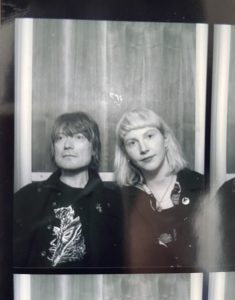 thinking about subcultures and punk though, one of the reasons it’s so empowering is because it’s so much about owning/defining our strangeness or rejecting normative cultures. Whether that’s defensive or not, it can be useful and transformative. I also like working on the margins of the frames I occupy, which says a lot about my privileges. What’s concerning for me is that this often still revolves around straight able bodied White cis men, which is depressing but not surprising. It’s dangerous to get caught up in your own sense of outsider-ness unless that can also be used to platform or serve others. Maybe that’s too simplistic. I am interested in the realisation that I have at times ‘othered’ myself to myself but this stuff is endless and I think it’s also a tightrope and maybe a boring one as I am a cis White women myself, so like I try think about that as critically as my blind spots will let me. In many ways making art is ego work really, it helps me get over myself in my daily life.
thinking about subcultures and punk though, one of the reasons it’s so empowering is because it’s so much about owning/defining our strangeness or rejecting normative cultures. Whether that’s defensive or not, it can be useful and transformative. I also like working on the margins of the frames I occupy, which says a lot about my privileges. What’s concerning for me is that this often still revolves around straight able bodied White cis men, which is depressing but not surprising. It’s dangerous to get caught up in your own sense of outsider-ness unless that can also be used to platform or serve others. Maybe that’s too simplistic. I am interested in the realisation that I have at times ‘othered’ myself to myself but this stuff is endless and I think it’s also a tightrope and maybe a boring one as I am a cis White women myself, so like I try think about that as critically as my blind spots will let me. In many ways making art is ego work really, it helps me get over myself in my daily life.
Blauerosen: You have also mentioned a desire to represent altered states of mind. It seems that more and more people are looking for inspiration and meaning in altered states of mind. Has reality become too mundane or so dystopian?
Nick: I think so. I’m not saying anything new here but I feel we inhabit the online world more than any other at this point and I’m not sure how healthy that is, meanwhile the sun is rising and setting outside. So the definition of ‘reality’ itself has changed a lot over the last 20 years. Also, I think we are a lot more cynical at this point than in previous decades yet many of us just skim along the surface of information now so we generally know a very scant amount about a lot of things we’ve channeled for ourselves, which is probably as good a recipe for dystopia as anything.
Katy: I mean its fucked really isn’t it, its like living in hell for so many people, there is nothing mundane about it. And then to top if all off, there is all this systematic gas lighting going on where

people are being told ‘that isn’t happening’ and ‘don’t feel that way’, its collectively traumatising. How can we live in a world where people can honestly use terms like ‘left-wing fascism’, ‘reverse racism’, ‘anti-anti fascists’ ? I agree with a lot of what Nick says about this, but there is this sort of paradox happening of also looking inward/becoming self focused/escaping in and out. Can we honestly bear to sit with all this? I don’t personally want to slide too far off the deep end so like to keep at least one foot in troubling reality, I like to experiment and daydream but I loathe full time hedonism/escapism.
Blauerosen: There is a song in this album that has 3 chapters; ‘Sky Is A Flat Panel‘. It seems like a realization of a psychedelic nature. Can you talk a little bit about these songs?
Katy: Hadn’t thought of it that way, but I came up with those lyrics with a friend as part of an old band. We used a process where I would recount experience and they would rework them into unspecific truisms. It was about this experience I had at a tiny music festival in a field in the middle of nowhere in Canada and there was this tornado so the whole thing got cancelled half way through, everyone was stuck there and our tents where being swept away. I think I was messing around with this person in a tent and it was terrifying. Mykki Blanco had played the night before and then it was like the whole festival was huddled inside this cottage with the guy from Silver Apples playing ‘Oscillations, oscillations, electronic evocations of sound’s reality’ on a tiny keyboard. So that’s demystifying the context but as an example of how that doesn’t make it any less surreal. Life is strange. With this reworking its now morphed into a sonic ritual about ‘absorption’ and flow.
Blauerosen: It is truly fascinating to me that you describe the concept of shared histories and experiences as a closed loop, an inescapable circle. You take an almost ‘heretic’ approach towards human connection by choosing to speak about retreats into inner worlds when almost everyone is trying to avoid this as much as possible. If music is to accompany us into a journey like this, do you feel that we might get lost ‘in there’?
Katy: I don’t see retreating into yourself as the antithesis of connecting with others, I believe in both. I think trauma can create states of feeling like we are skimming across the surface perpetually, like a stuck or skipping record. Getting lost ‘in there’ sounds like psychosis. But so is getting lost ‘out there’. I believe in focusing and expanding perspectives as much as we can with each other and that music can act as a transmitter but where its received (if at all) or how it lands will change depending on who or what is on the receiving end.
Blauerosen: There is a discreet pop element in some of the songs of this experimental album and I truly admired the space you created for it. Which are the songs that make you dance?
Nick: We both really liked ‘Green Light‘ by Lorde when we were recording the album. An old one I keep going back to is ‘Losing You‘ by Solange.
Katy: Whatever I like often has a melodic element or songs that are almost solely made up of repeated chorus hooks. I also love Solange, if you can even call what she does now pop music. ‘Dancing On Your Grave‘ by Chris and Cosey makes me dance, as does ‘Peppermint Pig‘ by Cocteau Twins, actually ‘All Mirrors‘ by Angel Olsen is also amazing.
Blauerosen: What sort of stories do you enjoy reading/listening to?
Nick: At the moment I’m reading ‘Spring Snow’ by Mishima. I like mostly short stories that are strange or horrific in some way – I read a collection of Robert Graves’ short stories recently, and in the past I loved reading M. R. James and of course Poe and H. P. Lovecraft. I like how with Poe many of his horror stories are based on real emotional states like regret or shame etc. On the other hand I also like Iris Murdoch a lot, her stories involve human relationships a lot more but she has a knack of framing them in a blown out almost farcical way where the drama can crescendo in a totally car crash way. Basically I like anything that goes beyond the constraints of normality in order to illustrate experiences more clearly – because there is a lot more to existence than what we cling on to as normality.
Katy: Especially during this time, I am listening to a lot of audiobooks. ‘On Earth We’re Briefly Gorgeous’ by Ocean Vuong is next on my list, after I finish Angela Davis’ ‘Freedom is a Constant  Struggle’. Generally though, I love anything by Maggie Nelson, am interested in the works of CAConrad and read quite a lot of Art Psychotherapy articles and more like historic theory. I like watching recorded lectures on Youtube, bit sad! I like some science fiction like Ursula Le Guin and Phillip K. Dick as well. One of the most enjoyable books I have read over the past few years was Andrea Lawlors ‘Paul Takes The Form of A Mortal Girl’.
Struggle’. Generally though, I love anything by Maggie Nelson, am interested in the works of CAConrad and read quite a lot of Art Psychotherapy articles and more like historic theory. I like watching recorded lectures on Youtube, bit sad! I like some science fiction like Ursula Le Guin and Phillip K. Dick as well. One of the most enjoyable books I have read over the past few years was Andrea Lawlors ‘Paul Takes The Form of A Mortal Girl’.
Blauerosen: Your album has been released in digital and cassette formats. What made you choose the cassette?
Nick: Partly we like the format which is DIY and cheap to produce, but partly no other bigger label we approached other than Gob Nation was interested in releasing the album. I would have liked a vinyl release – I think the artwork would have worked really well on that format, maybe some time in the future.
Blauerosen: Which was the last cassette you bought?
Nick: Haha the last one I bought was Katy’s solo Bitchin’ Car tape.
Katy: I can’t remember the last time I bought a tape, I think the last time might have been ages ago when I swapped the above mentioned tape with Theo for one of his Powerplant tapes.
Blauerosen: You have both been involved in other music projects. Are all of them still active? Are you writing new material for any of them?
Nick: Peepholes and Bamboo are dormant now but we may do something again in the future. I occasionally Zoom with Kat, my partner in Peepholes, and although I feel she has shot off into the distance on her own trajectory I’d love to do something with her again, it would be a challenge for me.
Katy: Public Service is over. Es is ongoing. I haven’t been in a practice room since March. I had a lot of music come out over the past few years so I guess this is what you might call a rest or a gathering or something, others might call it a block.
Blauerosen: Having included a beautiful cover of David Bowie’s ‘Ashes To Ashes‘ it is evident that his music has inspired you. Who else would you include in your artistic reference points?
Nick: I’m really inspired mostly by my instruments and who I’m working with at the time, so in this instance Katy. Incidentally I used a very old ARP Pro Soloist synthesiser throughout the album that was used on Bowie’s Low album so there’s a further sonic connection of a sort, it has a pretty distinctive sound. We both looked outside of music for inspiration too, most obviously with psychoanalytic theory but also things like David Lynch’s Elephant Man film, and an unfinished set of rushes for a film that never was, about Wilfred Bion which is on Youtube. We kind of had the Elephant Man in mind a little when we made the video for ‘Until Then’. I also kept in mind the collaboration between Grace Pailthorpe and Reuben Mednikoff, it seemed appropriate somehow and their paintings fed into how I visualised the album.
Blauerosen: I found that the creative treatment of Tim Buckley’s ‘Song of Siren’ is a moment of brilliance within this album. It is not a cover, it is a re-imagining of its whole energy and meaning. I feel that I have to thank you for that. Can you tell us what this song means to each of you?
Katy: I made that sample loop ages ago by playing the Tim Buckley and This Mortal Coil versions from Youtube at the same time and recording it directly onto GarageBand and just didn’t have anywhere to put it before this, but again an old band tried to cover that song. I like to make visual collages, so I guess this is a bit like that. I was thinking of a sort of ‘call and response’ thing and think that lyric is really good at communicating longing/a type of desire/distance and it gets creepy if you repeat it skipping like that, it’s like the sound of death.
Nick: Originally we used that sample on a cover of Roxy Music’s ‘Mother Of Pearl‘ that we recorded. It’s not really meant to be a cover or even a piece unto itself, it just leads you in and out of the ‘Sky Is A Flat Panel‘ suite of songs. Personally, This Mortal Coil’s version of the song has had more impact on me, I loved this version when I first heard it years ago; the chords, melody and lyric I found very moving along with the desolate production.
Blauerosen: Finally, you have mentioned that this collaboration is also a political structure of mutual exchange and shared resources. Can you elaborate a bit more on that?
Katy: Embarrassingly, I think that was a bit of a reach using the term ‘mutual exchange’ in relation to music making. However, I do believe within the current ‘hostile environment’ there is something inherently political in exploring and making space for ‘invisible’ dynamics, the unknown (and therefore potentials), the subconscious and building music scenes on practices of collaboration and trust. Always risky. Practically speaking I would never have been able to make music like this alone, apart from not having the technical skill of producing or realising ideas in the way Nick has, I also don’t own all these vintage synths! Whatever project I am involved in, we share resources, skills and ways of working which often results in music that is greater than the sum of its parts. I like thinking about ideas around ‘value’ and abundance and how limited these have become in this society (i.e. value reduced to financial incentive or profit and in the context of murderous austerity), so I suppose it’s also a practice of staying with the struggle towards ‘freedoms’ whether that’s mentally and/or as ways of being.
